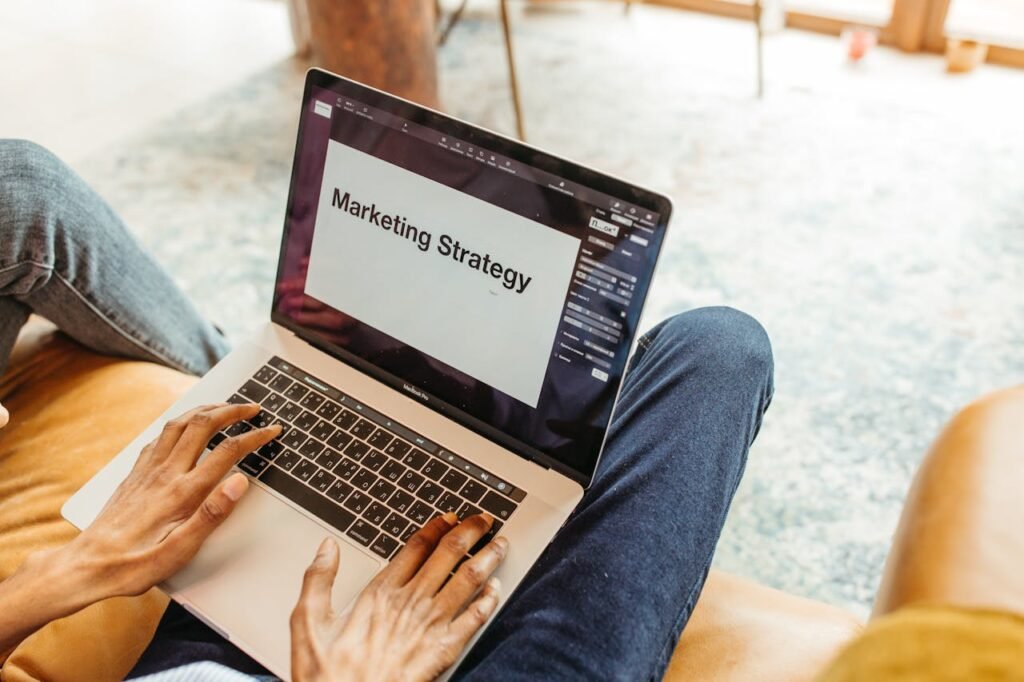In today’s digital world, many businesses focus on quick wins through paid advertising, but the true treasure lies in organic growth. Organic growth doesn’t just lower your acquisition costs—it builds trust, loyalty, and a brand that can stand the test of time. It’s not just about traffic; it’s about attracting high-quality customers who genuinely connect with your business.
The key to organic growth is strategy. By focusing on the right tactics, you can create a powerful and sustainable growth engine that consistently brings in quality leads without spending a fortune on ads. Let’s explore actionable strategies to harness the potential of organic growth.
Step 1: Build a Strong Content Strategy
The Foundation of Organic Growth
Content is the backbone of organic growth. High-quality content doesn’t just attract visitors; it educates, engages, and converts them into loyal customers. But it’s not enough to create content for the sake of it—you need a strategic approach.
Start by identifying your target audience’s pain points, interests, and questions. Tools like Google Keyword Planner, AnswerThePublic, and SEMrush can help uncover what your audience is searching for. Once you know what they need, create content that provides clear, actionable solutions.
For example, if you’re a fitness brand, create guides like “How to Build a Home Workout Routine” or “Top 10 Foods for Muscle Recovery.” Content like this addresses specific problems and positions your brand as a trusted resource.
Consistency Over Volume
While creating a large volume of content can be tempting, quality and consistency are far more important. Publish regularly, even if it’s just once a week, and focus on creating in-depth, well-researched pieces. Each article, video, or infographic should leave your audience feeling that they’ve learned something valuable.
For example, a deep-dive blog post on “The Benefits of Resistance Training for Women Over 40” might take longer to produce, but it will resonate more with a niche audience than a generic article about exercise.
Step 2: Optimize Your Website for Search Engines
The Role of SEO in Organic Growth
Search Engine Optimization (SEO) ensures that your content is discoverable by your audience. While SEO might seem technical, it boils down to making your website user-friendly and aligned with search engine algorithms.
Start with on-page SEO. Use descriptive titles, meta descriptions, and headers that include your target keywords. For instance, if your page is about sustainable fashion, ensure the title and meta description reflect that. Add relevant internal and external links, and use alt text for images.
Off-page SEO is equally important. Build backlinks from authoritative sites in your industry through guest blogging, partnerships, or creating content worth linking to.
Prioritize User Experience
Search engines reward websites that provide a seamless user experience. Ensure your website is mobile-friendly, loads quickly, and is easy to navigate. For example, if a potential customer visits your site and struggles to find the information they need, they’ll leave—and search engines notice that.
Regularly audit your website’s performance using tools like Google Analytics and PageSpeed Insights. Small improvements, like compressing images or fixing broken links, can make a big difference.
Step 3: Harness the Power of Social Media

Choose the Right Platforms
You don’t need to be everywhere—focus on the platforms where your audience spends their time. If you’re a B2B brand, LinkedIn might be your go-to. For visual brands like fashion or food, Instagram or Pinterest could be more effective.
Engage with your audience by sharing helpful content, answering questions, and starting conversations. For instance, if you’re a tech brand, share tutorials or updates on industry trends. If you’re a wellness coach, post motivational tips or quick workout routines.
Create Shareable Content
Social media thrives on content that people love to share. Focus on visuals, bite-sized tips, or emotionally resonant stories. For example, a heartfelt story about how your product helped a customer can perform much better than a direct sales pitch.
Encourage user-generated content by asking your audience to share how they use your product. Feature these posts on your profile, creating a sense of community while showcasing real-life use cases.
Step 4: Build Relationships Through Email Marketing
Nurture Leads Over Time
Email marketing is a direct line to your audience and one of the most effective tools for organic growth. It’s not just about promotions; it’s about building relationships. Use email campaigns to educate, inspire, and nurture leads at every stage of their journey.
For instance, if someone signs up for your newsletter, send a welcome series that introduces your brand, offers valuable resources, and invites them to explore more. Gradually move them toward taking action, like signing up for a webinar or making a purchase.
Segment Your Audience
Not all subscribers are the same, so your emails shouldn’t treat them that way. Segment your list based on interests, behaviors, or demographics, and tailor your messaging accordingly.
For example, if you run a travel agency, send adventure-focused emails to one group and luxury getaway content to another. Personalization makes your emails more relevant and increases engagement.
Step 5: Leverage Word-of-Mouth and Referrals
Encourage Happy Customers to Spread the Word
Word-of-mouth remains one of the most powerful drivers of organic growth. Happy customers are more likely to recommend your brand to their friends, family, or colleagues—but you need to make it easy for them.
Implement a referral program that rewards customers for bringing in new business. For example, offer a discount, free product, or exclusive access to services for every successful referral. Highlight these programs in your emails, on social media, and on your website.
Build a Community Around Your Brand
Creating a loyal community can amplify word-of-mouth. Engage with your audience through events, forums, or social media groups. For instance, a fitness brand could create a Facebook group where members share workout tips, recipes, and progress photos.
When people feel connected to your brand and its mission, they’re more likely to become advocates.
Step 6: Collaborate with Other Brands and Influencers

Partner with Complementary Brands
Collaborations can help you reach new audiences without competing for the same customers. Look for brands that complement your offerings. For instance, a meal delivery service could partner with a fitness app to create a joint wellness challenge.
These partnerships introduce your brand to a new, relevant audience, boosting organic visibility and trust.
Work with Authentic Influencers
Influencers can amplify your reach, but authenticity is key. Choose influencers who genuinely align with your brand and have an engaged audience that matches your target market.
For example, a sustainable skincare brand could collaborate with a beauty influencer who shares eco-conscious values. Encourage the influencer to share personal stories or experiences with your product rather than scripted promotions.
Step 7: Analyze and Adjust Your Strategy
Use Data to Drive Decisions
Organic growth requires constant refinement. Regularly analyze your performance metrics to understand what’s working and what isn’t. Tools like Google Analytics, HubSpot, and social media insights can provide valuable data on traffic sources, user behavior, and conversions.
For instance, if a blog post consistently drives traffic but doesn’t convert, tweak the call-to-action or add an enticing offer. If social media engagement is high but website visits are low, focus on better integrating your profiles with your site.
Experiment and Iterate
Don’t be afraid to test new approaches. Try different content formats, explore emerging platforms, or tweak your messaging. Organic growth is a long-term game, and experimenting ensures that you stay relevant and ahead of the competition.
Step 8: Invest in Long-Form, Evergreen Content
Why Evergreen Content Matters
Evergreen content is timeless. Unlike trendy or news-based posts that lose relevance over time, evergreen articles and resources continue to attract traffic and generate leads for years. Investing in this type of content can significantly fuel your organic growth strategy.
For example, a piece like “The Ultimate Guide to Starting a Small Business” will remain relevant as long as your target audience exists. By consistently updating such posts to reflect changes in the industry, you can ensure they remain valuable and authoritative.
Evergreen content also tends to rank well in search engines, driving steady, long-term traffic to your site. When paired with the right call-to-actions (CTAs), this traffic can translate into high-quality leads.
Formats That Work Well for Evergreen Content
Some of the best-performing evergreen formats include how-to guides, comprehensive tutorials, resource lists, and case studies. These formats provide actionable value, making them more likely to be shared and referenced.
For instance, if you’re a SaaS company, a detailed tutorial on “How to Streamline Your Workflows with Automation Tools” could resonate with your audience. Adding videos, infographics, or downloadable checklists makes the content even more engaging.

Related: Check out our free tools:

Step 9: Focus on Local SEO (If Applicable)
Targeting Local Audiences
If your business operates in a specific geographic area, optimizing for local search is critical. Local SEO ensures that your business appears in search results when nearby customers look for products or services you offer.
For example, if you own a bakery in New York, ranking for “best bakery in NYC” can drive high-intent traffic. Start by claiming your Google Business Profile and ensuring all your information—address, phone number, business hours—is accurate and up-to-date.
Encourage satisfied customers to leave reviews on platforms like Google and Yelp. Positive reviews boost your credibility and improve your local search rankings.
Leveraging Location-Based Content
Creating location-specific content can also help you dominate local searches. For instance, a landscaping company could write blog posts like “10 Landscaping Trends for Homeowners in San Diego.” This not only establishes expertise but also aligns your brand with the needs of your local audience.
Step 10: Engage Through Webinars and Live Events
Building Authority Through Webinars
Webinars are an excellent way to showcase your expertise, interact with your audience, and generate high-quality leads. They provide an interactive platform where potential customers can ask questions, learn from you, and develop trust in your brand.
For example, a digital marketing agency might host a webinar on “How to Boost Your SEO Rankings in 2024.” At the end of the session, attendees are more likely to see your agency as a trusted partner and consider your services.
Promote your webinars through email campaigns, social media, and partnerships. Make sure the content is educational rather than overly sales-focused.
Hosting Live Q&A Sessions
Live events, whether virtual or in-person, offer unique opportunities to engage directly with your audience. A live Q&A session on Instagram or LinkedIn can position your brand as approachable and transparent.
For example, a skincare brand could host a live session with a dermatologist answering customer questions about skin health. This fosters trust and provides valuable insights to your audience.
Step 11: Use Video Content Strategically
Video as a Growth Engine
Video content is one of the most effective tools for capturing attention and driving organic engagement. Platforms like YouTube, Instagram Reels, and TikTok prioritize video content, making it an excellent way to reach new audiences.
Create videos that align with your audience’s interests and pain points. For instance, a software company might produce tutorials, while a food brand could share recipe videos. Keep videos short, engaging, and visually appealing to maximize retention.
Repurposing Video Content
Repurpose your video content across multiple channels to maximize its reach. For instance, a 10-minute YouTube tutorial can be edited into shorter clips for Instagram or TikTok. Similarly, transcripts of your videos can be turned into blog posts or infographics.
By repurposing, you can extend the lifecycle of your content and reach different segments of your audience without creating something entirely new.
Step 12: Foster Community Engagement

Building Trust Through Interaction
Organic growth thrives on meaningful connections. Engaging directly with your audience—whether through social media comments, forum discussions, or direct messages—builds trust and loyalty.
For example, a fitness coach who actively responds to questions in their Instagram comments or creates polls for followers fosters a sense of community. These interactions show that your brand values its audience, which can lead to stronger relationships and increased word-of-mouth referrals.
Using Forums and Niche Communities
Participating in niche communities or forums like Reddit, Quora, or industry-specific groups can also drive organic growth. Answer questions, share your expertise, and subtly introduce your brand when it’s relevant.
For example, if you’re a financial consultant, answering questions about retirement planning on Quora positions you as an expert. Include a link to a relevant blog post or resource on your website to drive traffic organically.
Step 13: Monitor and Adapt to Changing Trends
Staying Relevant in a Dynamic Landscape
The digital landscape is always evolving, and staying ahead of trends is critical to sustaining organic growth. Regularly monitor changes in consumer behavior, industry developments, and platform algorithms to ensure your strategies remain effective.
For instance, if Google introduces a new feature like Passage Indexing, adjust your content strategy to optimize for it. Similarly, if a new social media platform gains traction with your target audience, consider exploring it early.
Experimenting and Innovating
Don’t be afraid to experiment with new formats, channels, or messaging. Test new approaches and measure their impact to refine your strategy. For example, if short-form videos are trending, experiment with TikTok or Instagram Reels to see how your audience responds.
Step 14: Leverage Analytics for Continuous Improvement
Track Key Performance Indicators (KPIs)
To sustain and optimize your organic growth, you must understand what’s working and what isn’t. Tracking key performance indicators (KPIs) ensures that your efforts align with your goals. Metrics like website traffic, bounce rates, time on page, and conversion rates provide a clear picture of how your organic strategies are performing.
For example, if a blog post is driving significant traffic but has a high bounce rate, it may signal that the content isn’t resonating with visitors or that the call-to-action (CTA) isn’t compelling. Adjusting these elements can improve engagement and conversion rates.
Use tools like Google Analytics, Ahrefs, or SEMrush to dig into the data. These tools offer insights into traffic sources, keyword rankings, and user behavior, empowering you to make informed decisions.
Set Up Regular Reviews
Organic growth is a long-term strategy, but that doesn’t mean you should set it and forget it. Schedule regular performance reviews—monthly or quarterly—to analyze your progress. Identify patterns, celebrate wins, and tackle areas where results may be lagging.
For instance, if you notice a decline in organic traffic to your evergreen content, it could be time to refresh it with updated information or additional insights. Regular reviews ensure you’re always one step ahead.
Step 15: Tap into Customer Feedback for Growth

Listen to Your Audience
Your customers are one of your most valuable resources for organic growth. Their feedback offers insights into what they value, what they want more of, and what might be missing from your offerings. Actively seek their opinions through surveys, social media polls, or direct conversations.
For example, a survey could reveal that customers find your blog helpful but want more video tutorials. Using this insight, you can expand your video content strategy to better meet their needs.
Listening to your audience builds trust and loyalty while helping you refine your strategies.
Use Testimonials and Case Studies
Happy customers are powerful advocates. Sharing their success stories not only validates your product or service but also serves as social proof for potential customers. Testimonials and case studies are particularly impactful in organic marketing.
For instance, create a detailed case study showing how your solution helped a specific client achieve their goals. Share this content on your website, social media, and newsletters to attract leads who resonate with similar challenges.
Step 16: Build Authority in Your Industry
Establish Yourself as a Thought Leader
Becoming a recognized authority in your industry enhances trust and boosts your organic growth. Share insights, trends, and expert advice through articles, webinars, or guest appearances on podcasts and events.
For example, if you’re in the tech industry, publish a whitepaper on emerging technologies or speak at a virtual conference about innovation. The more value you provide, the more your audience will see you as a go-to resource.
Authority drives organic growth because people naturally gravitate toward brands they perceive as knowledgeable and credible.
Contribute to High-Quality Publications
Guest blogging or contributing articles to reputable publications in your industry is another way to build authority. These platforms expose you to new audiences while associating your brand with respected sources.
For instance, if you’re a financial advisor, contributing an article to a well-known finance blog can attract a readership already interested in your expertise. Include links back to your website to drive organic traffic.
Conclusion: Invest in Long-Term Success
Leveraging organic growth isn’t about quick fixes—it’s about building a sustainable foundation that attracts high-quality customers. By focusing on content, SEO, community engagement, and long-term strategies, you can create a powerful engine for consistent growth.
The beauty of organic growth lies in its compounding effect. Each piece of content, interaction, or relationship you build strengthens your brand’s visibility and trustworthiness over time. With patience and persistence, these efforts will pay off, delivering loyal customers and a strong competitive edge.
Now it’s your turn to implement these strategies. Focus on creating genuine value, building connections, and staying adaptable. Organic growth takes time, but the results are well worth the effort—and your business will be stronger for it.
READ NEXT:
- Are Vanity Metrics Killing Your Marketing Efficiency? Here’s What to Track Instead
- Pinpointing Digital Marketing ROI: Why Your Metrics Aren’t Telling the Full Story
- Unlocking Real ROI in Digital Marketing: The Hidden Costs Draining Your Budget
- How Misaligned Marketing Funnels Are Blocking Your ROI Potential
- Best Digital Marketing Agency In Santa Ana, California
- Best Digital Marketing Agency In San Francisco, California





















